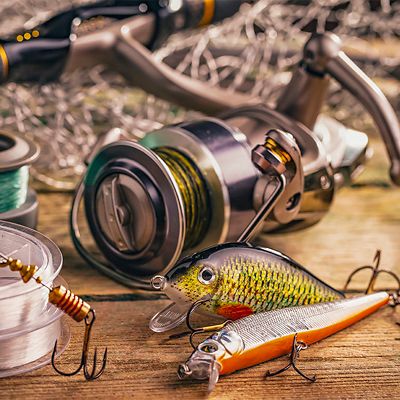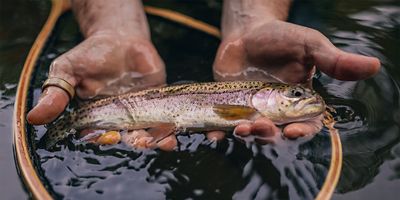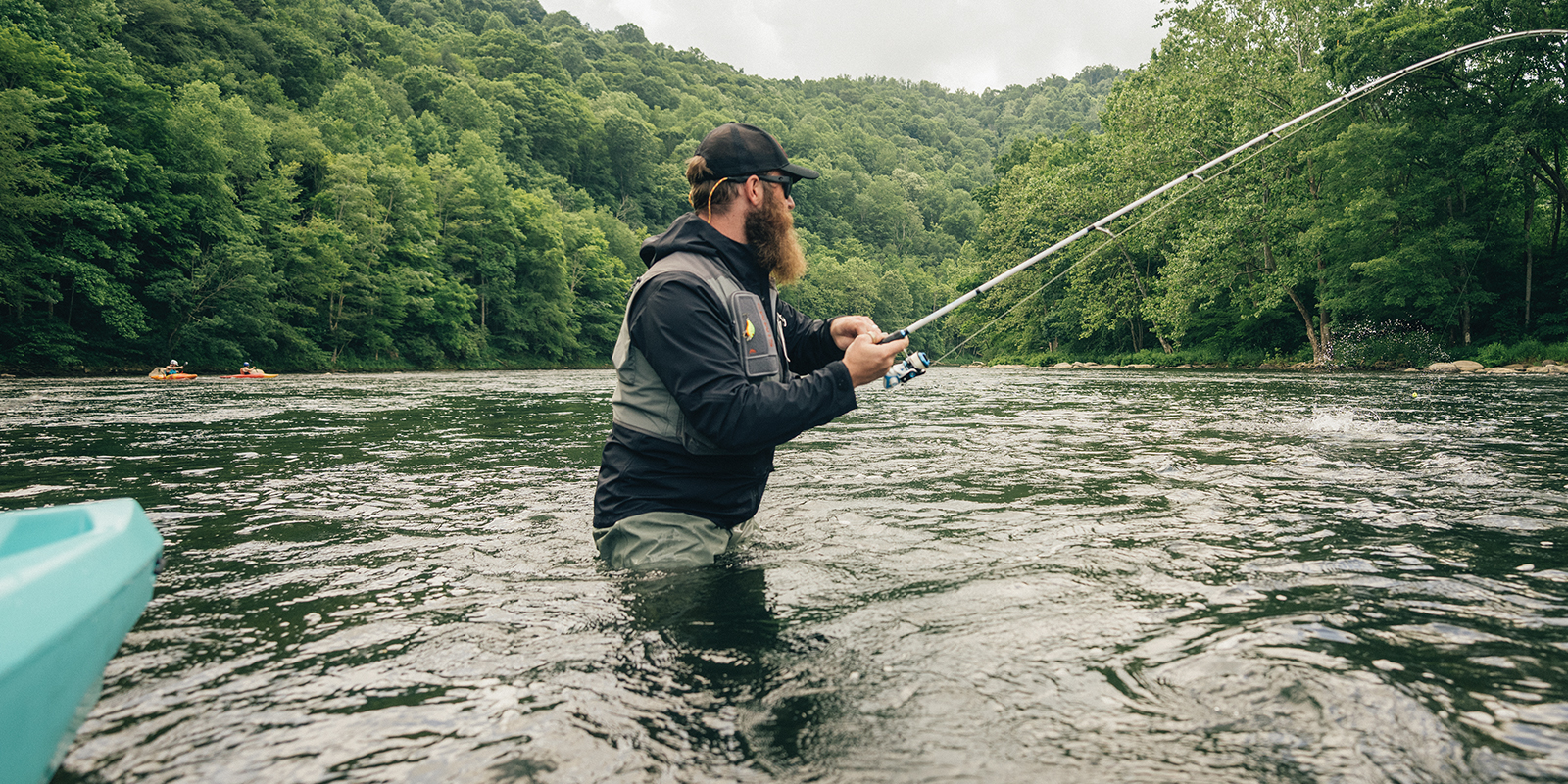Where and When To Look
The features in lakes that attract and hold fish aren’t as obvious as they might be in a river or stream with current, but anglers should look for certain markers. Spots with vegetation (and a change in the thickness of vegetation) indicate more oxygen in the water and more cover from prey. Logs, rocks, or other solid structures are also worth your attention. For manmade lakes like reservoirs, natural structures might be harder to find. Instead, look for drop-offs and ledges, which are often farther out. Many reservoirs have available depth maps worth tracking down that show some of these features.
Lake fish are more likely to feed at night when they have greater cover, so the evenings and mornings are when you’re most likely to see fish rising and taking dry flies. If you would prefer to fish during the day, pick a day after an evening with no moon. Fish rely on moonlight to find insects and will be more willing to feed in daylight hours after a dark night. During the day, look to shaded zones and vegetation, which provide more cover and comfort for the fish.
Finally, look for inlets and outlets. Any movement in the water increases its oxygenation and makes it a more preferable fish habitat. Inlets can also be cooler than the main body of the lake, which fish like trout enjoy. Each species of fish has its own preferred temperature range, so keep an eye on the lake’s air and water temperatures—and its depth. You may need to get your fly deeper some days for certain fish.
Lake Visibility
While calm days with gin-clear water make for incredible scenery, easy wading, and exciting fish-spotting, they might not be best for actual fishing in lakes and ponds. Too much water clarity can make vulnerable fish that spook easily. You’ll need to be more careful, keep a greater distance, watch the location of your shadow, plus use longer leaders, more accurate flies, and more delicate casts.
On the other hand, cloudy days are ideal: Shadows are hard to come by, water clarity is reduced, and fish are feeling more secure, on the hunt for their next meal.





